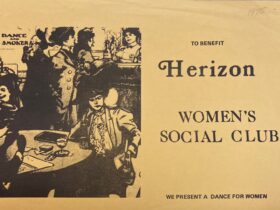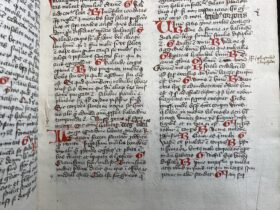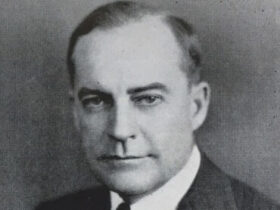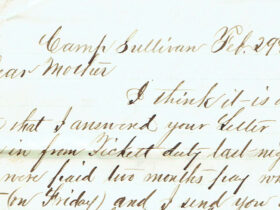The papers of Ottilie Ethel Leopoldine “Tilly” Losch, Countess of Carnarvon, are housed in the Special Collections department of the BU Libraries. The Countess’s papers, original artwork, and memorabilia constitute what is known as the Tilly Losch Collection, and are part of the much larger Max Reinhardt Archives. Tilly Losch, (15 November 1903 – 24 December 1975) was an Austrian-born dancer, choreographer, actress and painter who lived and worked for most of her life in the United States and United Kingdom. From 1939 until 1947, Tilly Losch, Countess of Carnarvon, was married to the 6th Earl of Carnarvon, whose family seat, Highclere Castle, in Hampshire is the location for the PBS series Downton Abbey.
Born in Vienna as Ottilie Ethel Leopoldine Losch, Tilly Losch studied ballet from childhood at the Vienna Opera, making her student debut in 1913 in Louis Frappart’s 1885 Wiener Walzer. She became a member of the corps de ballet on 1 March 1918 and a coryphee three years later. Her first solo role was the Chinese Lady Doll in Josef Hassreiter’s Die Puppenfee. Ballet master Heinrich Kroeller and the Opera’s co-director, composer Richard Strauss, promoted her to soloist on 1 January 1924. She danced prominently in new ballets by Kroeller, Georgi Kyaksht and Nicola Guerra. Outside the Opera, Losch took modern dance class with Grete Wiesenthal and Mary Wigman, and performed dramatic and movement roles in Viennese theaters, at the Salzburg Festival and in Max Reinhardt’s 1924 Berlin production of A Midsummer Night’s Dream, also choreographing for the Shakespeare play. Losch resigned from the Vienna Opera on 31 August 1927 in order to work more with Reinhardt at the Salzburg Festival and in New York. She also choreographed Reinhardt’s Everyman and Danton’s Death.
Losch made her London debut in 1928 in Cochran’s production of Noël Coward’s musical review The Year of Grace, and over the course of the next few years, worked in London and New York as both a dancer and choreographer. In New York she danced in The Band Wagon with Fred and Adele Astaire in 1931. Reinhardt encouraged her to extend herself and believed she could also act; casting her in a 1932 London production of The Miracle, Losch’s part was rewritten to provide her with the only spoken dialogue in the production (The Lord’s Prayer) which she recited to dramatic effect.
Losch’s first husband, the Anglo-American millionaire and surrealist arts patron Edward James, had a ballet company founded for her – Les Ballets 1933, which performed in London and Paris. George Balanchine, whom she had met in Berlin in 1924 and who helped her with some of her choreography, was artistic director and the entire repertory was choreographed by him. Its most popular work was The 7 Deadly Sins with Kurt Weill’s music and Brecht’s text. Losch danced the leading role (a dual figure) and Lotte Lenya sang it. Losch was divorced by James in 1934.
After her divorce, a severe clinical depression caused Losch to spend time in a sanatorium in Switzerland and abandon dance. It was during this time that she married Henry Herbert, 6th Earl of Carnarvon. His father was George Edward Stanhope Molyneux Herbert, 5th Earl of Carnarvon, DL (26 June 1866 – 5 April 1923), styled Lord Porchester until 1890, was an English aristocrat best known as the financial backer of the search for and the excavation of Tutankhamun’s tomb in the Valley of the Kings.
Losch began painting, first in watercolors and then later in oils. Her earliest works were self portraits, but she later created portraits of friends such as Anita Loos, Lotte Lenya, and Kurt Weill, and she received encouragement from Cecil Beaton.
Carnarvon, aware of Losch’s delicate health, sent her to the United States, where he perceived she would be safe from the growing danger of the war in Europe. She mounted her first exhibition in New York in 1944, and was well received by critics; the prominent collector and museum founder Albert C. Barnes bought one of Losch’s works from her Dutch debut show.[2]
She later combined visual elements of dance into her paintings, and often placed her subjects on a backdrop that evoked scenes of the war in Europe. As her style of painting developed she won acclaim. Her works were eventually purchased by London’s Tate and other galleries.
Losch’s marriage to Carnarvon ended in divorce in 1947 and she commuted between London and New York for the remainder of her life.
Tilly Losch died from cancer in New York on 24 December 1975. Carnarvon was among the many mourners at her funeral. She bequeathed many of her personal documents, sketches, painting and photographs to the Max Reinhardt Archives at Binghamton University.
It is possible to read her papers, look at photographs of Tilly Losch taken by Cecil Beaton, and study original examples of her artwork in the Special Collections department, which is located on the second floor of the Bartle Library. Special Collections is open Monday-Friday from 10:00am – 4:00, and by appointment.






